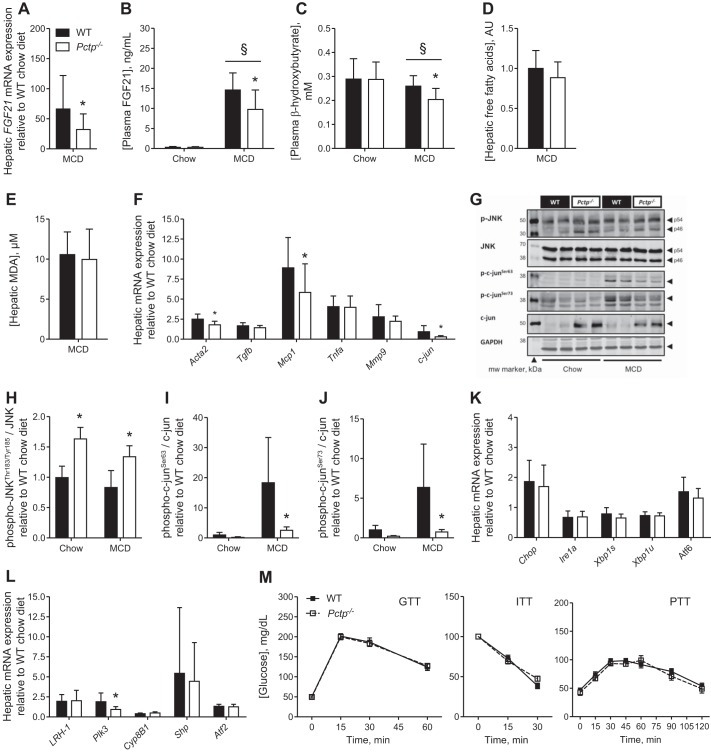Fig. 3.
PC-TP alters hepatocellular stress pathways during MCD diet. WT and Pctp−/− mice were fed a chow or MCD diet for 5 wk before measurements of fibroblast growth factor 21 (FGF21) mRNA expression in liver (A) and FGF21 protein concentration in plasma (B). Plasma concentration of β-hydroxybutyrate (C), hepatic concentration of free fatty acids (D), hepatic malondialdehyde (MDA) concentrations (E), and hepatic expression of genes central to cellular stress, inflammation, and fibrogenesis (F). Immunoblot of liver homogenate (G) and relative quantification of phospho-JNK over total JNK (H) and phospho-c-Jun Ser63 (I) and Ser73 (J) over total c-Jun. K: hepatic expression of genes that reflect endoplasmic reticulum (ER) stress. L: hepatic mRNA expression of liver receptor homolog-1 (LRH-1), along with downstream transcriptional targets. M: tolerance tests to glucose (GTT), insulin (ITT), and pyruvate (PTT). Values represent means ± SE. Chow-fed mice, n = 4–5; MCD diet-fed mice, n = 13–15. *P < 0.05, Pctp−/− vs. WT; §P < 0.05, MCD vs. chow diet.

